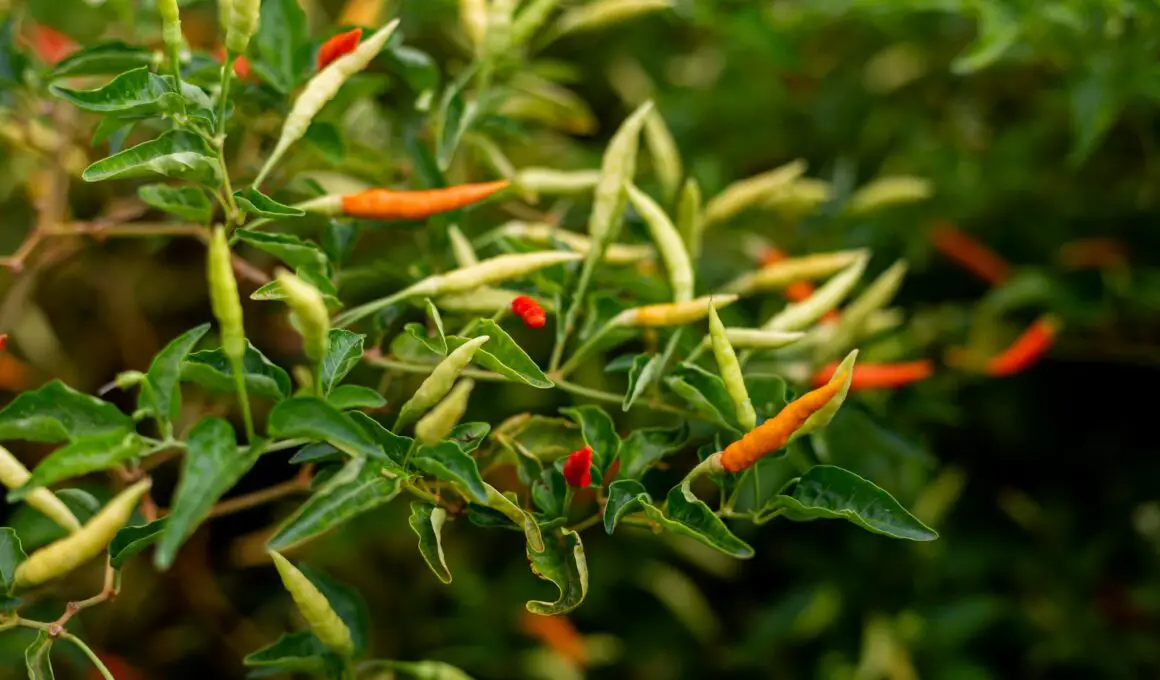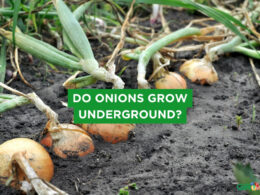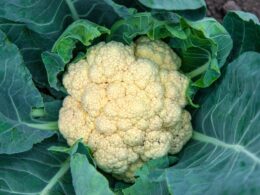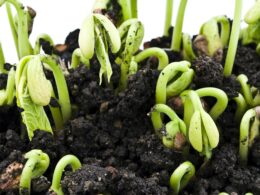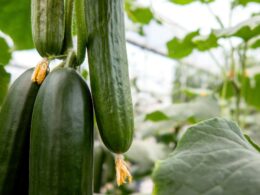In This Article Show
Peppers, ranging from sweet bell peppers to the fiery Carolina Reaper, add not just a splash of color to your garden but also an array of flavors to your culinary creations. Understanding the growth stages of peppers is crucial for any gardener aiming to maximize their harvest.
In this guide, we’ll cover everything from selecting the right seeds, and ensuring your soil is primed and ready, to the moment your peppers are ripe for the picking. We’ll also navigate through each growth stage of the pepper plant, offering tips and insights to help your pepper plants thrive.
Gardening is not just about patience and hard work; it’s also about knowledge. And when it comes to growing peppers, a little know-how goes a long way. So, whether you’re a first-time gardener or have been enjoying this rewarding hobby for years, this guide aims to support your pepper-growing journey, ensuring a bountiful and delicious harvest.
The Growth Stages and Timelines of Pepper Plants
Whether you’re tending to a couple of plants on your balcony or managing a more extensive garden plot, knowing what to expect and when can make a significant difference in your gardening success.
1. Germination
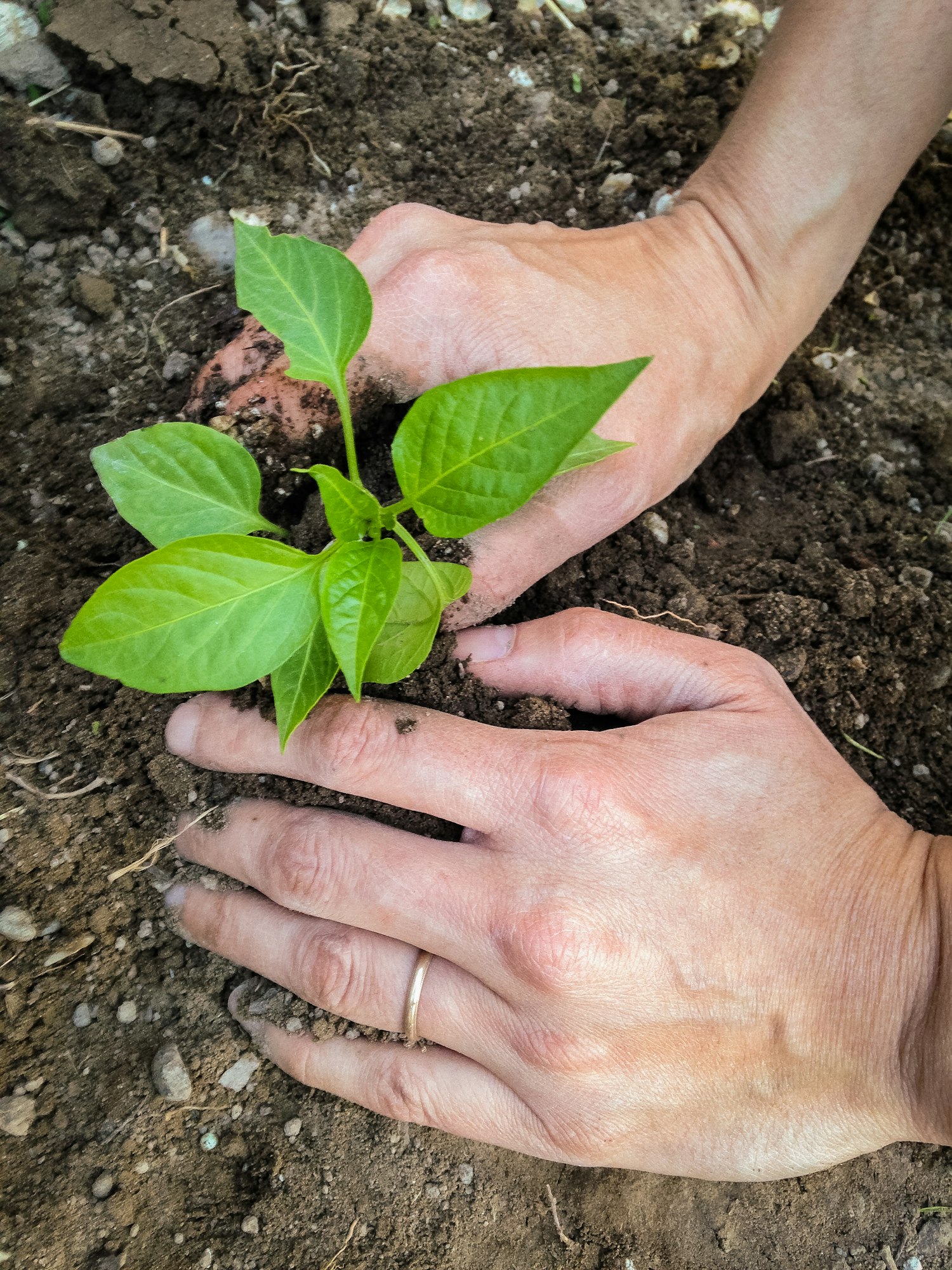
Pepper seeds typically germinate within 7-14 days, provided they’re kept in warm, consistently moist soil. A temperature range of 80-90°F (27-32°C) is ideal. Low temperatures can significantly slow down or even halt the germination process.
To encourage faster germination, consider using a heat mat under your seed trays. Soaking seeds in lukewarm water for 24 hours before planting can also help soften the seed coats and speed up germination.
Get Gardening For Beginners
Our new EBOOK shows newcomers and green thumbs alike a step by step guide to growing the garden of their dreams.
2. Seedling
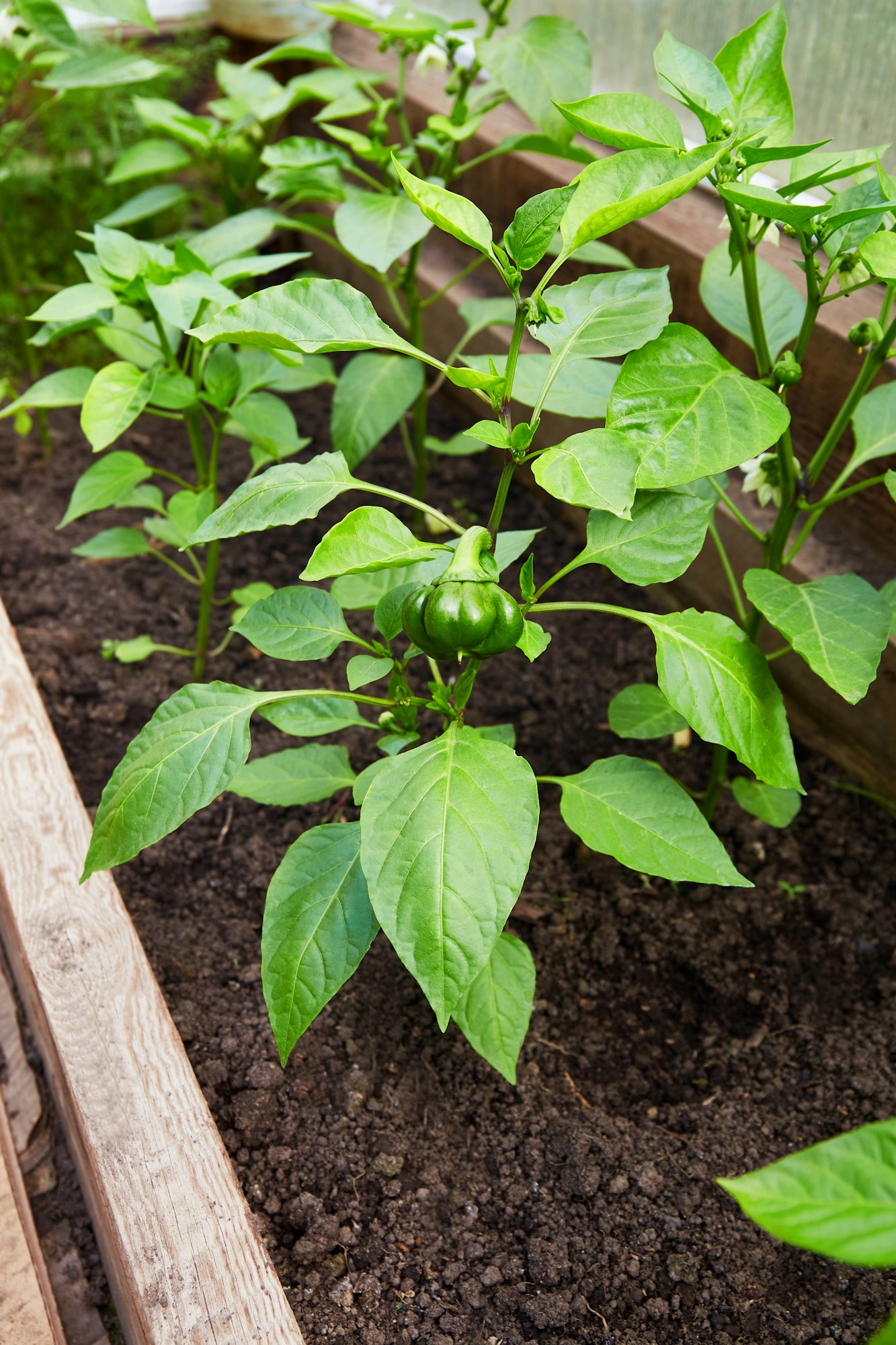
Once germinated, the seedlings will sport their first true leaves, different in shape from the initial sprouts. This stage is crucial as the young plants are developing their root systems and are particularly vulnerable.
Ensure seedlings receive plenty of light—around 14-16 hours a day is ideal. Use grow lights if natural sunlight is insufficient. Keep the soil consistently moist but not waterlogged, and maintain a temperature of about 70-75°F (21-24°C).
3. Vegetative Stage
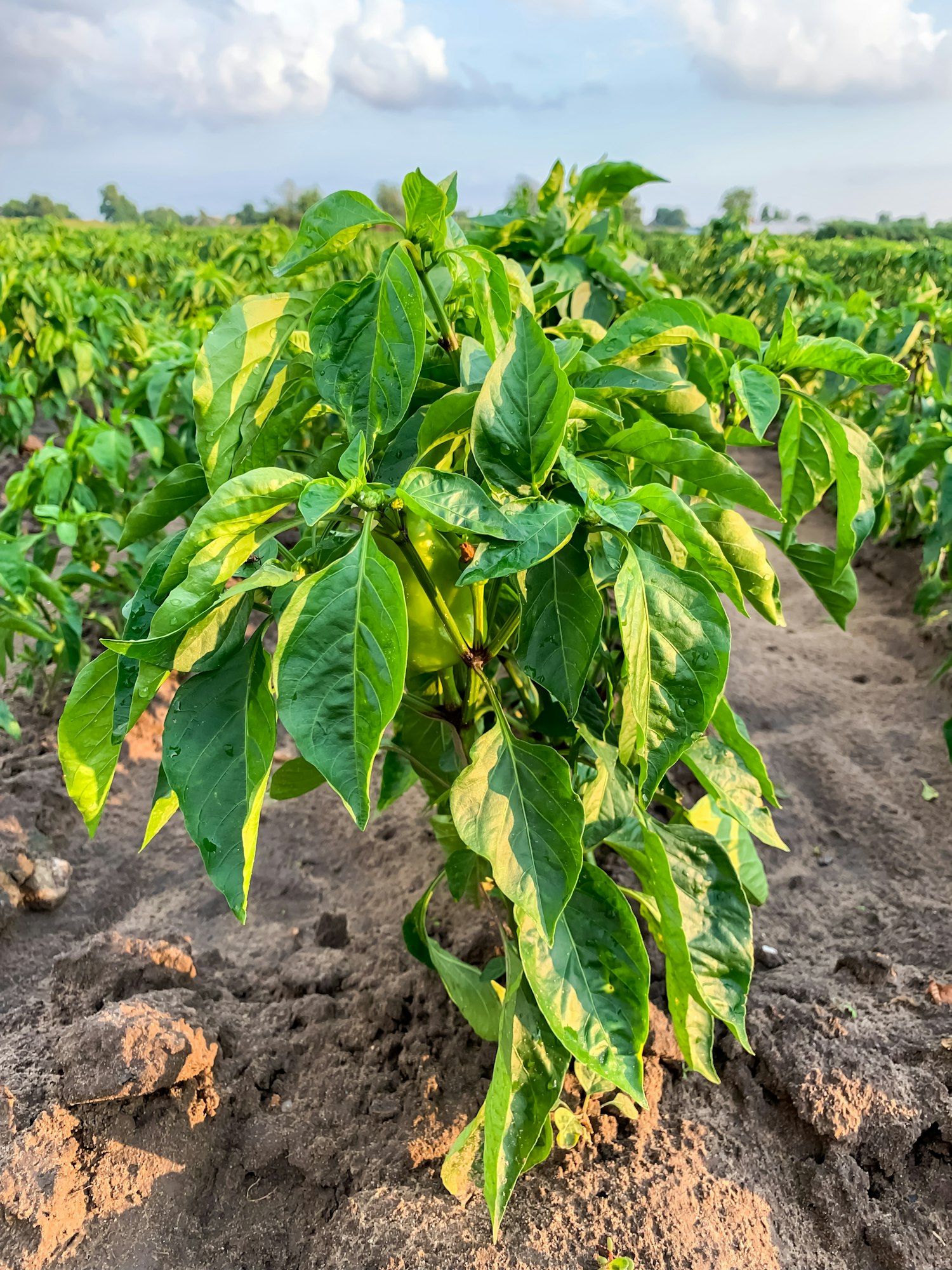
After establishing their first true leaves, pepper plants enter the vegetative stage, focusing energy on growing stems and leaves. This stage sets the foundation for future blooms and fruit.
Continue to provide ample sunlight or grow light exposure. Water when the top inch of soil feels dry, and start introducing a balanced, slow-release fertilizer to support growth.
4. Flowering
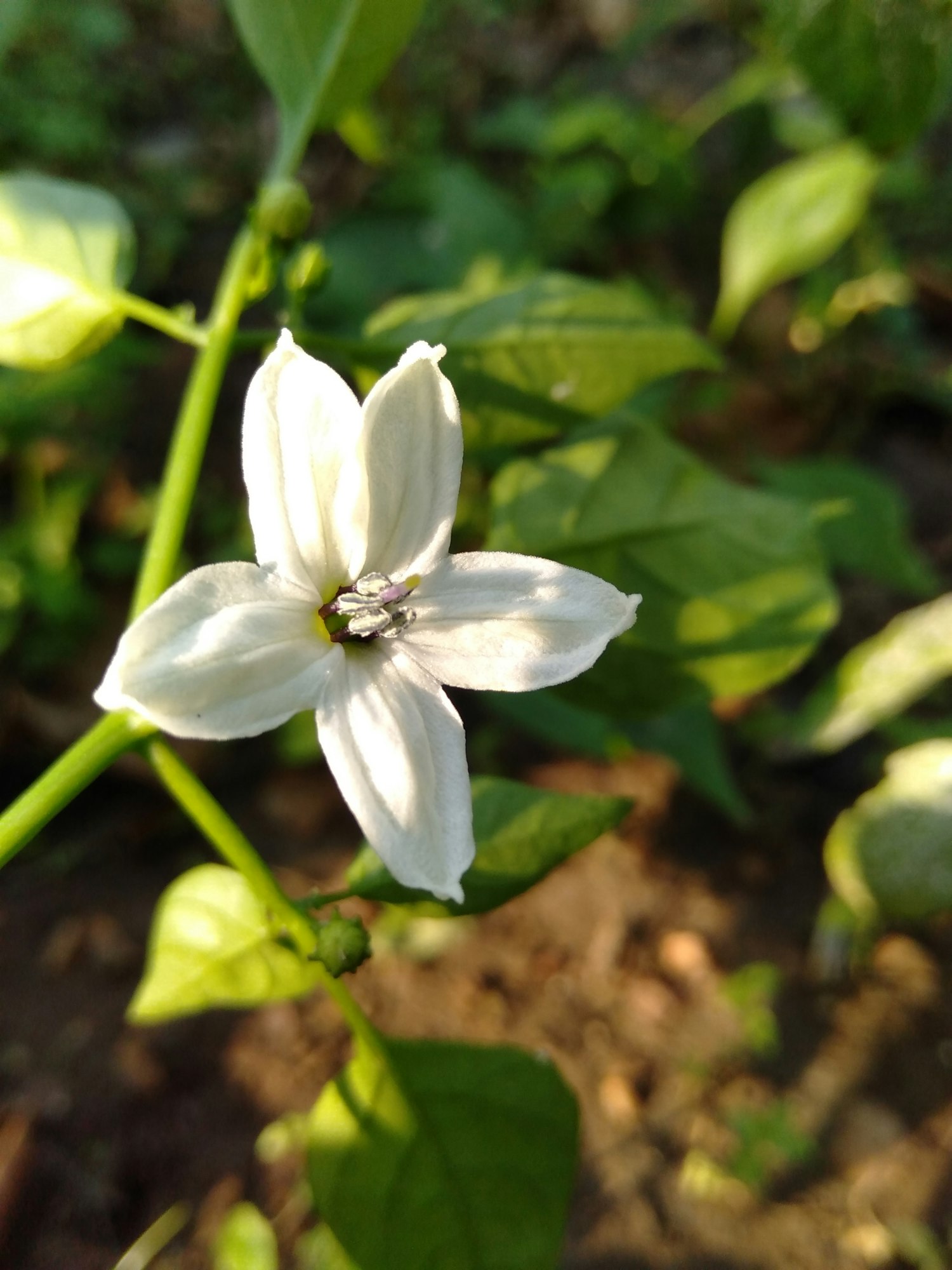
Flower buds will appear as the plants mature, usually several weeks after the vegetative stage begins. You’ll notice small buds developing at the nodes where leaves attach to the stem. For peppers to set fruit, flowers must be pollinated.
While many pepper varieties are self-pollinating, encouraging bees and other pollinators to visit your garden can increase fruit set. Gently shaking the plants or using a small paintbrush to transfer pollen can also promote pollination.
5. Fruit Development
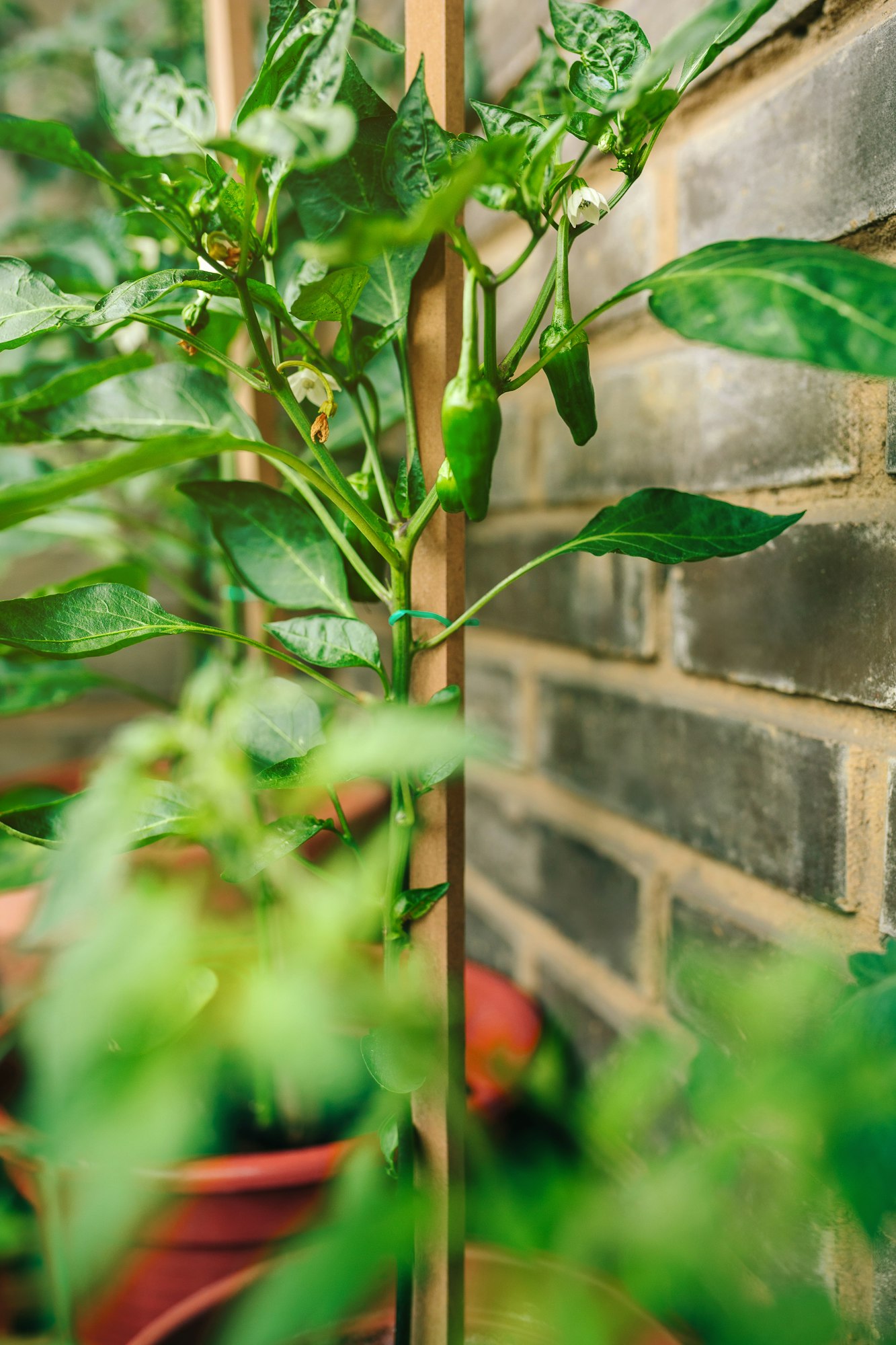
Following successful pollination, flowers will give way to small fruits that grow in size and change color as they mature. This stage requires patience and continued care. Ensure plants receive enough water to support growing fruits but allow the soil to dry slightly between watering. Continue with regular feeding, switching to a fertilizer higher in Potassium and Phosphorus to support fruit development.
Get Gardening For Beginners
Our new EBOOK shows newcomers and green thumbs alike a step by step guide to growing the garden of their dreams.
6. Maturation and Harvest

Peppers are ready to harvest when they’ve reached the desired size and color. Most varieties will transition from green to their final color—red, yellow, orange, or even purple.
Use scissors or a sharp knife to cut the peppers from the plants, leaving a small portion of the stem attached. To increase yield, regularly harvest ripe peppers to encourage the plant to produce more fruit.
By closely monitoring and supporting each stage of growth, gardeners can enjoy a rewarding harvest of fresh, flavorful peppers. Remember, each variety may have slightly different needs and timelines, so adjust your care accordingly and enjoy the process of growing these versatile and vibrant fruits.





